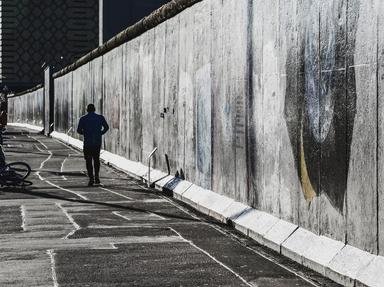Quiz Answer Key and Fun Facts
1. Who used the term 'Cold War' for the first time?
2. Which US President described the Cold War as 'hard and bitter peace'?
3. Who called the Cold War 'hot peace'?
4. Why the 'Cold War' is called so?
5. Which of the following events best describes the formal start of the Cold War?
6. What were the reasons for Cold War?
7. Under the Truman Doctrine of 1947, the Congress was ordered to sanction funds to help Greece and Turkey for eliminating communism. How much funding was sanctioned?
8. What treaty was signed by Great Britain, Belgium, The Netherlands, etc. to check the spread of communism in 1948?
9. When did Greece and Turkey become full NATO members?
10. What name was given to Eastern Germany under Soviet control?
11. The Korean War ended in 1953. On what date was the armistice signed?
12. By what conference was Vietnam divided into North and South?
13. The drafting of _______ Constitution led to the creation of West Germany.
14. EEMAP is the other name for which military bloc?
15. The __________ Peace Treaty was the first major international treaty on which the four erstwhile allies had been able to agree after years of an unbroken record of dissension and tension, sometimes threatening to lead to the brink of war.
16. Which doctrine was an extension of the Truman Doctrine in the Middle East?
17. Which UN Secretary General prevailed upon the US to suspend the blockade of Cuba and asked Khrushchev to withdraw the missiles from there?
18. At which place did Khrushchev and Eisenhower meet and agree to resume talks on the Berlin question?
19. Which US President signed the SALT-II treaty?
20. What treaty was signed in 1987 as part of the nuclear arms liquidation between Russia and USA?
21. What agreement was signed by Soviet Union, USA, UK and France in 1971?
22. The Basic Treaty was signed between which two countries?
23. East and West Germany were admitted to the United Nations in ______.
24. Under the IRNF Treaty the Soviet Union had to eliminate certain rockets and missiles. Which of them did she not eliminate?
25. What was the length of the Berlin Wall which was erected between East and West Germany in 1961?
Source: Author
swashbuckler
This quiz was reviewed by FunTrivia editor
bloomsby before going online.
Any errors found in FunTrivia content are routinely corrected through our feedback system.

